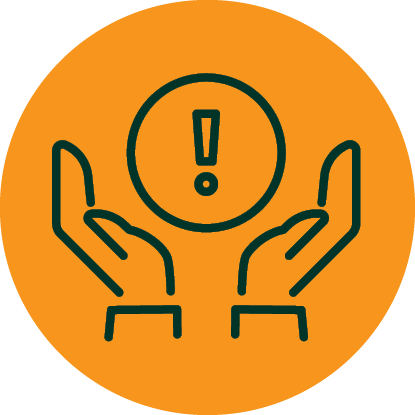Route development process
A Path Forward
Developing a route for a new transmission line is a complex process. Each state has statutes and rules that guide the route development process and help minimize a project's impact to humans and the environment.
Route development process
Input from landowners, community members, local leaders, Tribal representatives, and state and federal agencies as well as the project team's own expertise is critical as we develop and finalize a proposed route.
This project is in the early stages of development. We expect to begin the route development process in mid-2026. Today we have a general study area that we will use to begin reviewing potential routing options.
The project team will start by using data from publicly available sources and federal, state, and local agencies to define a study area. We consider existing utility corridors, existing land use, resource areas, and other data to help identify route opportunities to further refine the study area.
Share your feedback
Minnesota South DakotaThe next step in the route development process is to identify a route corridor where a possible route could be located and preliminary route options are identified. We will develop the route corridor based on public input, opportunities to minimize impacts, and where the new transmission line will need to connect into substations.
The preliminary route is a further narrowed area within the route corridor. Similar to the route corridor, we will develop the preliminary route based on input gathered during public open houses, input from community members, local leaders, Tribal representatives, and state and federal agencies. These factors will assist the project team as we develop the proposed route for permit applications.
Finally, the project team will use all of information and public input we have gathered throughout the route development process to develop a proposed route that we will submit to state PUCs in late 2026.
Each state's PUC will issue a final determination on the route. View the Regulatory process page for more details.
Routing considerations
During the routing process, our team will identify opportunities where routes and route alternatives could be located while understanding sensitivities or areas that would make routing difficult.
 Opportunities
Opportunities
Linear features that are oriented in the direction of the project:
- Field lines
- Property lines
- Section lines
- Roads
- Utility corridors
 Sensitivities
Sensitivities
Area resources or conditions that may require additional review and consideration:
- Agricultural conflicts
- Airports (public)
- Cemeteries
- Communication towers
- Conservation areas/nature preserves
- Contaminated areas
- Cultural/historic resources
- Forest
- Hospitals
- Levees/dams
- Mines/quarries
- Pipelines*
- Planned development
- Protected federal lands
- Protected state lands
- Railroads*
- Recreation
- Religious facilities
- Residences
- Scenic byways
- Schools/daycares
- Sensitive species
- Streams/wetlands
